Abstract
Simultaneous measurements of net CO2 exchange, water vapor exchange, and leaf water relations were performed in Mesembryanthemum crystallinum during the development of crassulacean acid metabolism (CAM) in response to high NaCl salinity in the rooting medium. Determinations of chlorophyll a fluorescence were used to estimate relative changes in electron transport rate. Alterations in leaf mass per unit area, which—on a short-term basis—largely reflect changes in water content, were recorded continuously with a beta-gauge. Turgor pressure of mesophyll cells was determined with a pressure probe. As reported previously (K Winter, DJ von Willert [1972] Z Pflanzenphysiol 67: 166-170), recently expanded leaves of plants grown under nonsaline conditions showed gas-exchange characteristics of a C3 plant. Although these plants were not exposed to any particular stress treatment, water content and turgor pressure regularly decreased toward the end of the 12 hour light periods and recovered during the following 12 hours of darkness. When the NaCl concentration of the rooting medium was raised to 400 millimolar, in increments of 100 millimolar given at the onset of the photoperiods for 4 consecutive days, leaf water content and turgor pressure decreased by as much as 30 and 60%, respectively, during the course of the photoperiods. These transient decreases probably triggered the induction of the biochemical machinery which is required for CAM to operate. After several days at 400 millimolar NaCl, when leaves showed features typical of CAM, overall turgor pressure and leaf mass per unit area had increased above the levels before onset of the salt treatment, and diurnal alterations in leaf water content were reduced. Net carbon gain during photoperiods and average intercellular CO2 partial pressures at which net CO2 uptake occurred, progressively decreased upon salinization. Reversible diurnal depressions in leaf conductance and net CO2 uptake, with minima recorded in the middle of the photoperiods, preceded the occurrence of nocturnal net CO2 uptake. During these reductions, intercellular CO2 partial pressure and rates of photosynthetic electron transport decreased. With advancing age, leaves of plants grown under nonsaline conditions exhibited progressively greater diurnal reductions in turgor pressure and developed a low degree of CAM activity.
Full text
PDF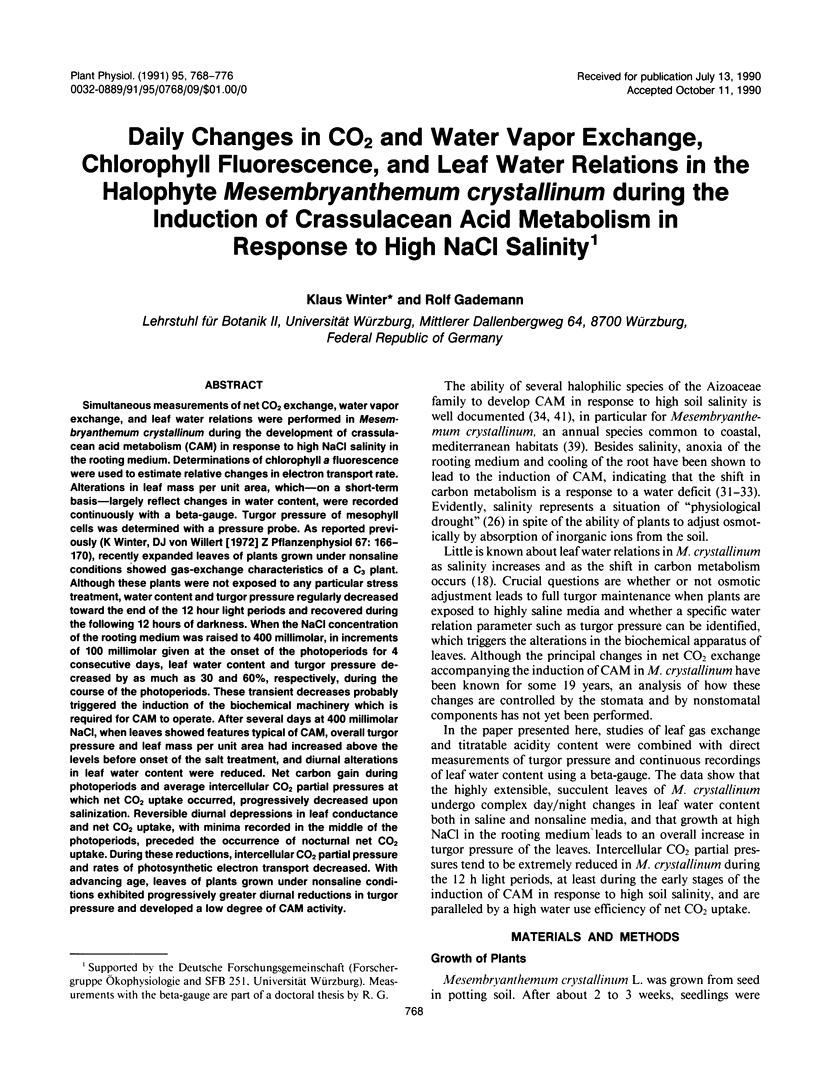
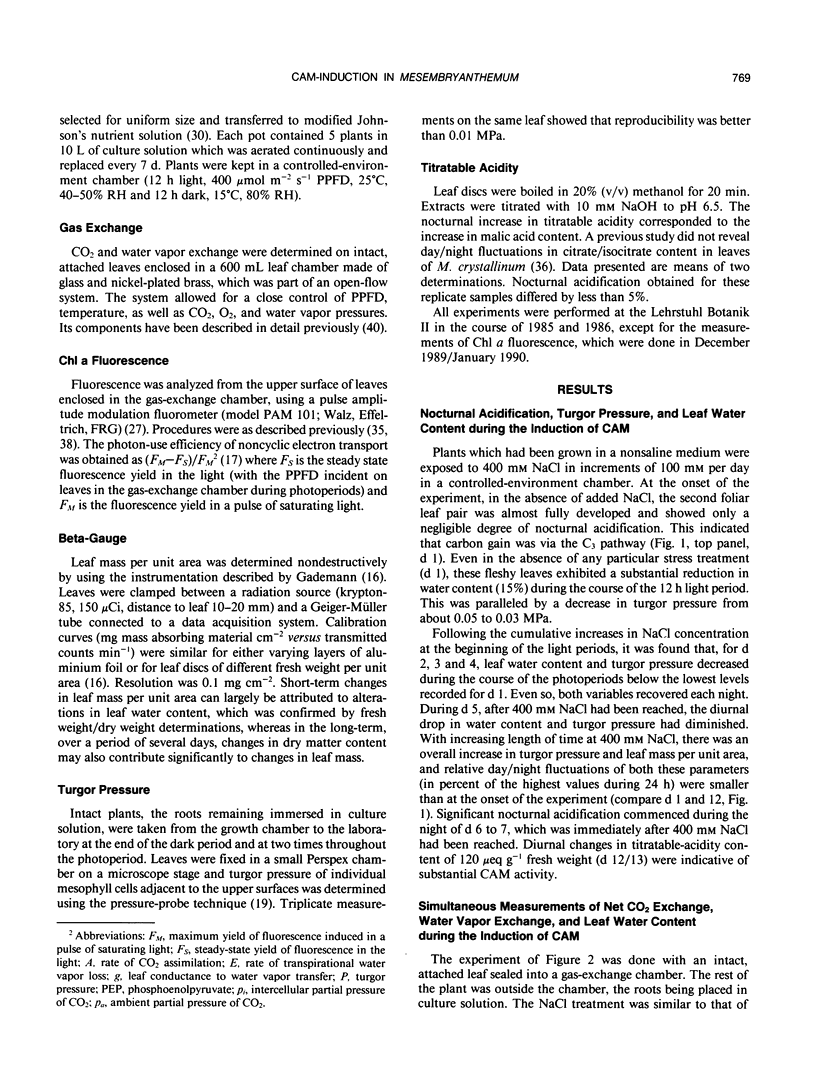
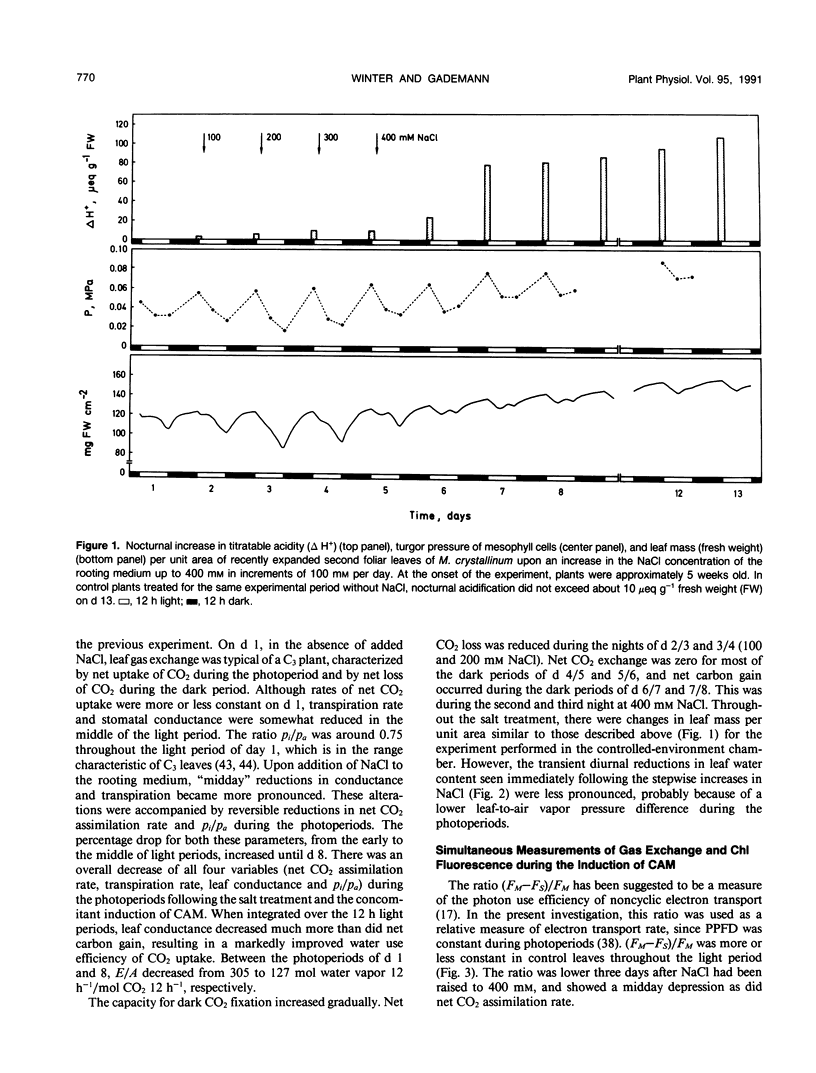
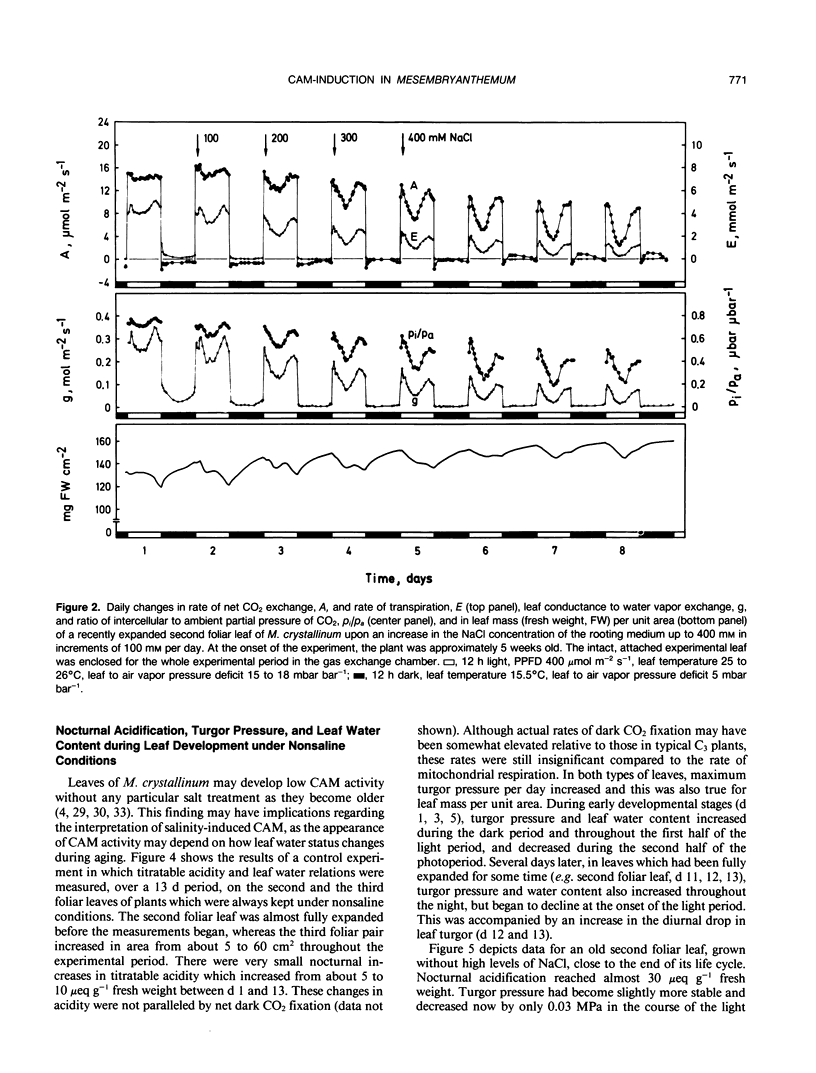
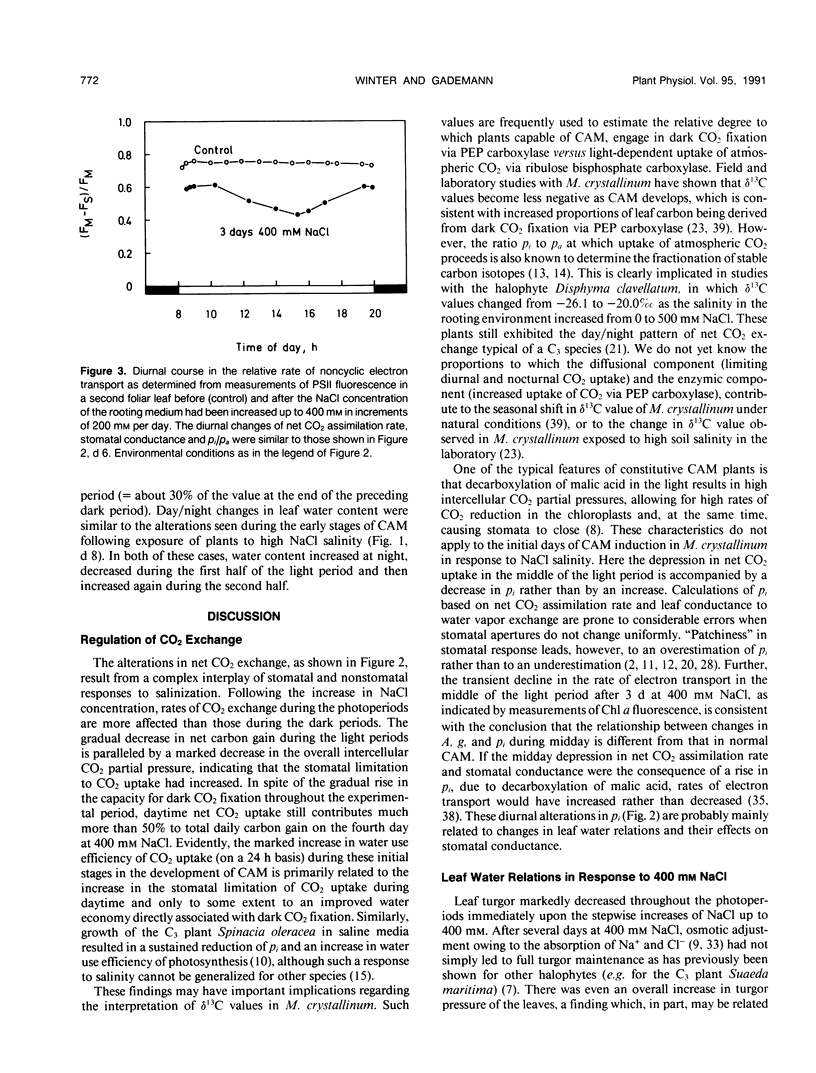
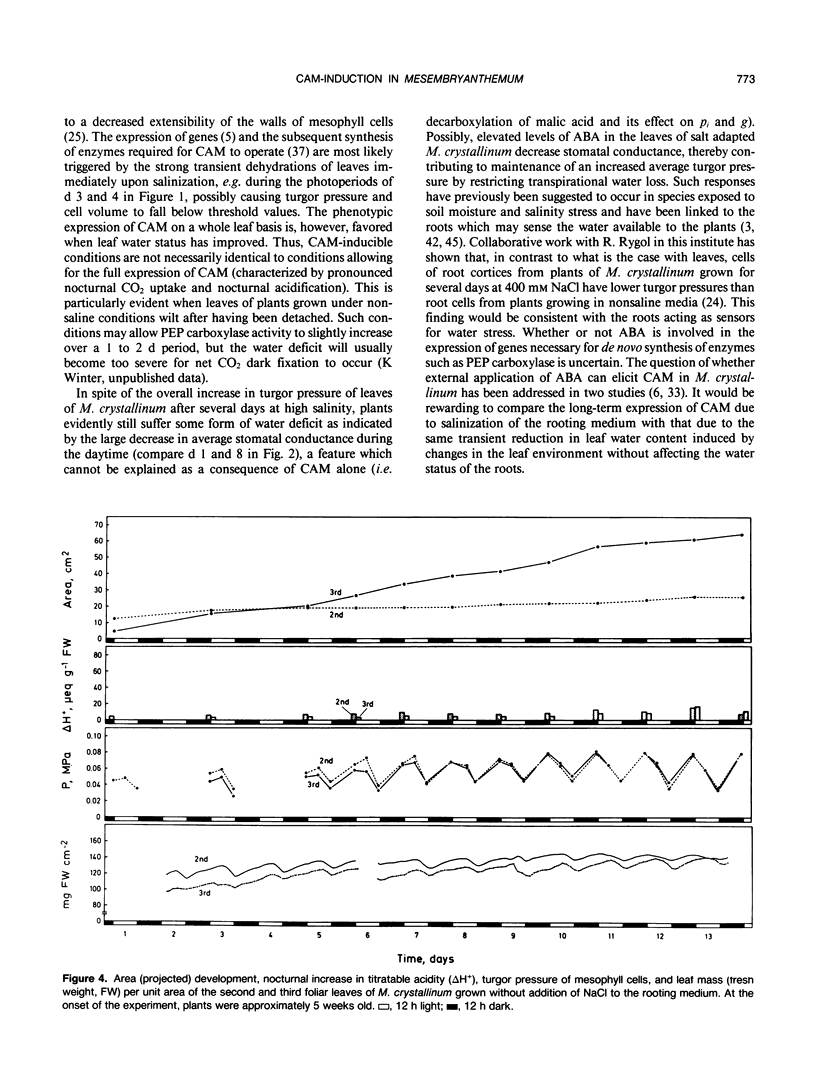
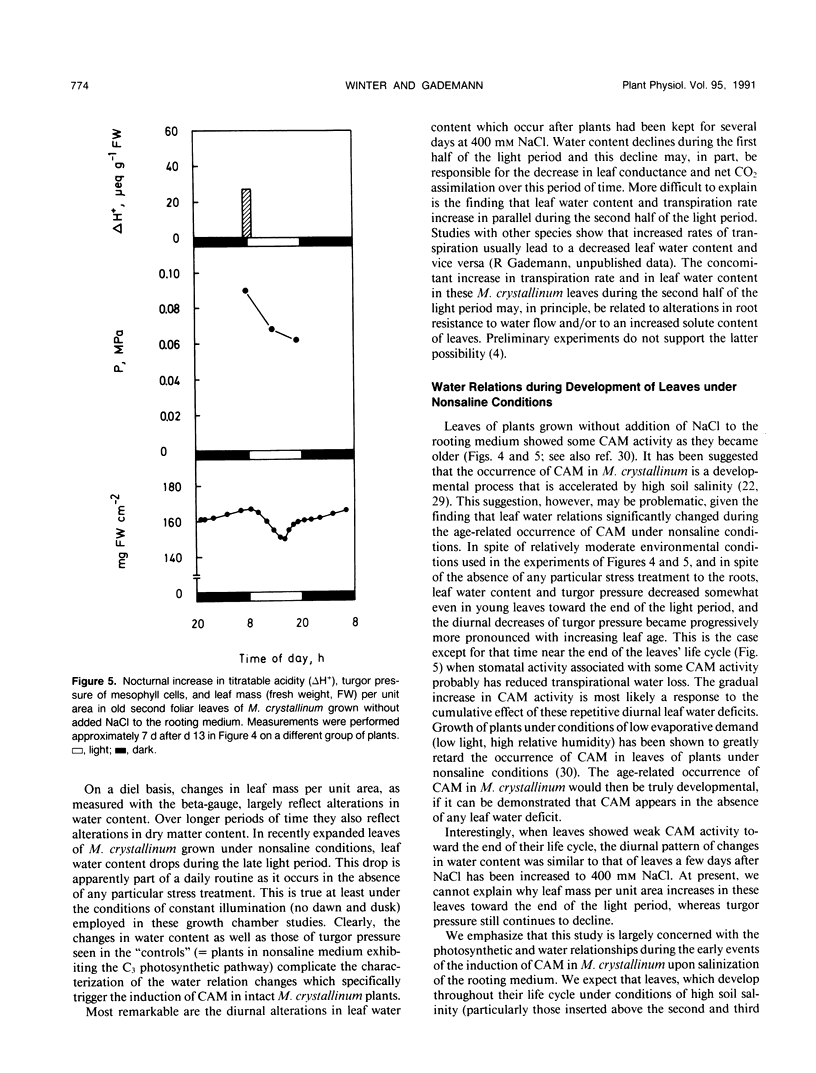
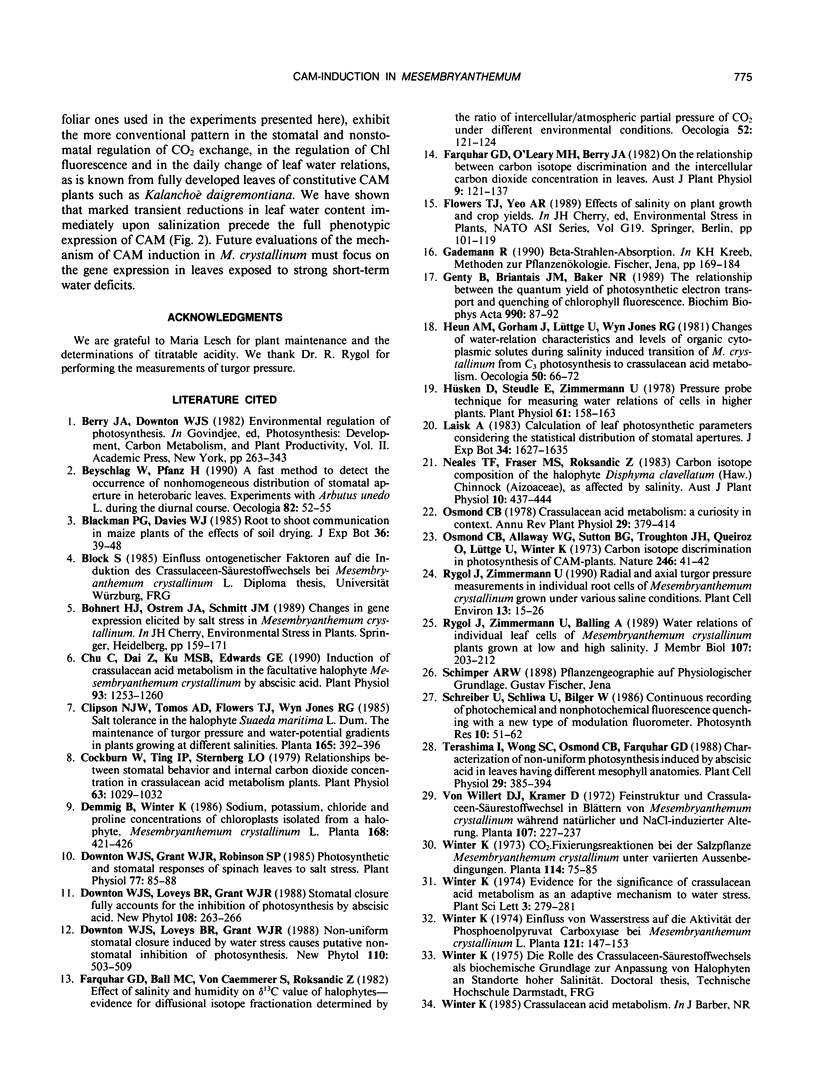
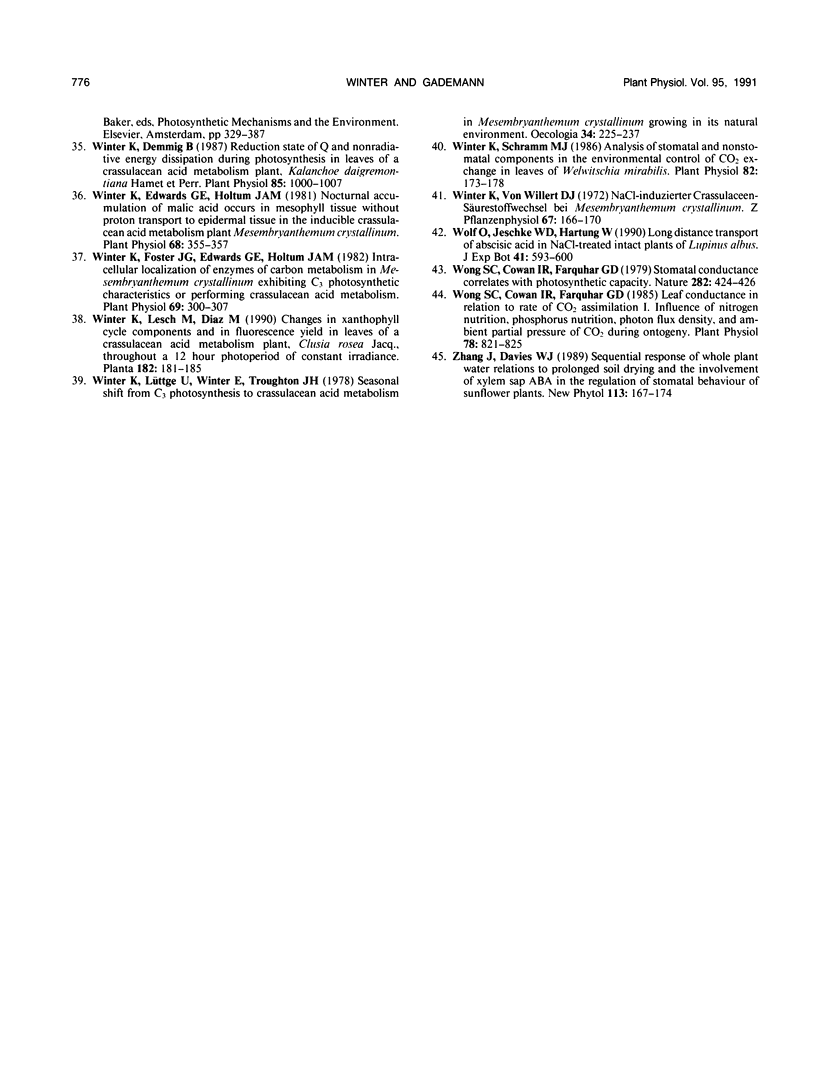
Selected References
These references are in PubMed. This may not be the complete list of references from this article.
- Chu C., Dai Z., Ku M. S., Edwards G. E. Induction of Crassulacean Acid Metabolism in the Facultative Halophyte Mesembryanthemum crystallinum by Abscisic Acid. Plant Physiol. 1990 Jul;93(3):1253–1260. doi: 10.1104/pp.93.3.1253. [DOI] [PMC free article] [PubMed] [Google Scholar]
- Cockburn W. Relationships between Stomatal Behavior and Internal Carbon Dioxide Concentration in Crassulacean Acid Metabolism Plants. Plant Physiol. 1979 Jun;63(6):1029–1032. doi: 10.1104/pp.63.6.1029. [DOI] [PMC free article] [PubMed] [Google Scholar]
- Davies A. G., Wheeler E. Analysis of the weights of infants of Bangladeshi origin attending two clinics in Tower Hamlets. Child Care Health Dev. 1989 May-Jun;15(3):167–174. doi: 10.1111/j.1365-2214.1989.tb00613.x. [DOI] [PubMed] [Google Scholar]
- Downton W. J., Grant W. J., Robinson S. P. Photosynthetic and stomatal responses of spinach leaves to salt stress. Plant Physiol. 1985 May;78(1):85–88. doi: 10.1104/pp.78.1.85. [DOI] [PMC free article] [PubMed] [Google Scholar]
- Hüsken D., Steudle E., Zimmermann U. Pressure probe technique for measuring water relations of cells in higher plants. Plant Physiol. 1978 Feb;61(2):158–163. doi: 10.1104/pp.61.2.158. [DOI] [PMC free article] [PubMed] [Google Scholar]
- Winter K., Demmig B. Reduction State of Q and Nonradiative Energy Dissipation during Photosynthesis in Leaves of a Crassulacean Acid Metabolism Plant, Kalanchoë daigremontiana Hamet et Perr. Plant Physiol. 1987 Dec;85(4):1000–1007. doi: 10.1104/pp.85.4.1000. [DOI] [PMC free article] [PubMed] [Google Scholar]
- Winter K., Edwards G. E., Holtum J. A. Nocturnal Accumulation of Malic Acid Occurs in Mesophyll Tissue without Proton Transport to Epidermal Tissue in the Inducible Crassulacean Acid Metabolism Plant Mesembryanthemum crystallinum: EVIDENCE AGAINST A PREVIOUS HYPOTHESIS. Plant Physiol. 1981 Aug;68(2):355–357. doi: 10.1104/pp.68.2.355. [DOI] [PMC free article] [PubMed] [Google Scholar]
- Winter K., Foster J. G., Edwards G. E., Holtum J. A. Intracellular Localization of Enzymes of Carbon Metabolism in Mesembryanthemum crystallinum Exhibiting C(3) Photosynthetic Characteristics or Performing Crassulacean Acid Metabolism. Plant Physiol. 1982 Feb;69(2):300–307. doi: 10.1104/pp.69.2.300. [DOI] [PMC free article] [PubMed] [Google Scholar]
- Winter K., Schramm M. J. Analysis of Stomatal and Nonstomatal Components in the Environmental Control of CO(2) Exchange in Leaves of Welwitschia mirabilis. Plant Physiol. 1986 Sep;82(1):173–178. doi: 10.1104/pp.82.1.173. [DOI] [PMC free article] [PubMed] [Google Scholar]
- Wong S. C., Cowan I. R., Farquhar G. D. Leaf Conductance in Relation to Rate of CO(2) Assimilation: I. Influence of Nitrogen Nutrition, Phosphorus Nutrition, Photon Flux Density, and Ambient Partial Pressure of CO(2) during Ontogeny. Plant Physiol. 1985 Aug;78(4):821–825. doi: 10.1104/pp.78.4.821. [DOI] [PMC free article] [PubMed] [Google Scholar]


